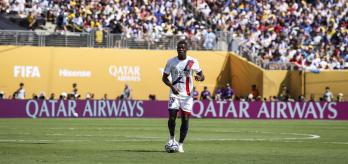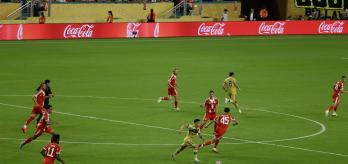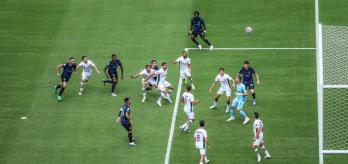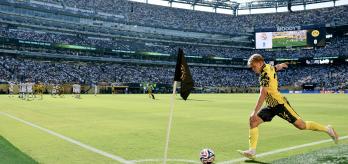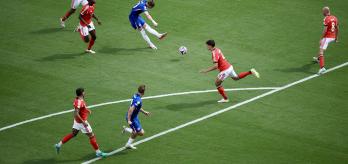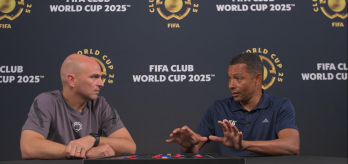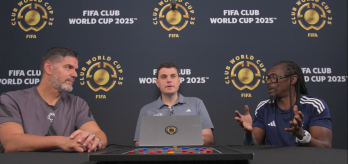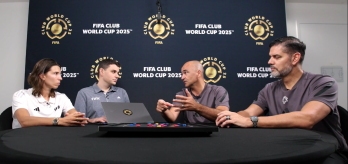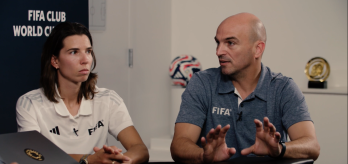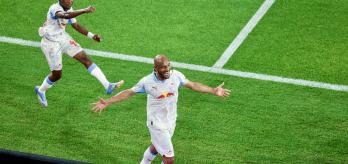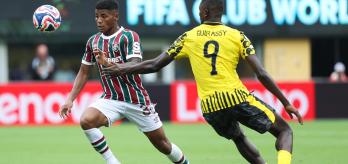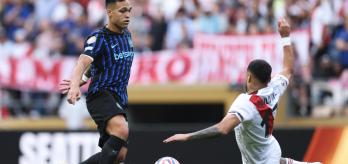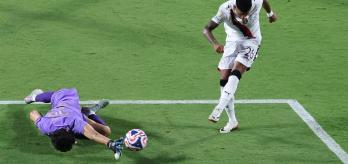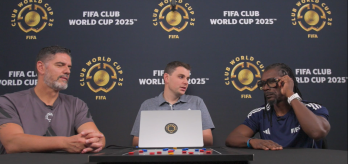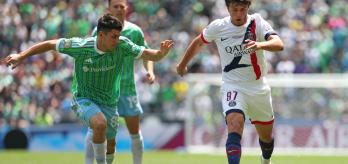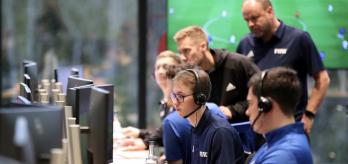In this roundtable discussion, experts from FIFA’s Technical Study Group, Esteban Cambiasso and Gilberto Silva, sit down together to discuss the participation of teams from South America at the tournament, how those clubs have managed to compete against some of the best in the world, the key players that made a difference in the United States, and how the Club World Cup could help South American clubs to remain competitive on the world stage.
Watch roundtable
Read summary
00:24
Technical strength of South American teams at the FIFA Club World Cup 2025
The experts begin by discussing how well the Argentinian and Brazilian clubs have done to adapt to a higher level of competition than they primarily face in their domestic competitions or on the South American continent, particularly defensively. Silva notes that these clubs have been very compact at the back to avoid conceding against European opposition, looking to hit stronger opponents on the break once possession is regained. Among the six representatives from the continent, Cambiasso and Silva mention CR Flamengo as the outlier in the pack, preferring to “build play in a more organised way”, with a greater emphasis on possession. The experts also state that, of the two Argentine clubs, River Plate tended to keep the ball more than Boca Juniors, as the latter had a “more explosive team”, so they decided to sit back and hurt opponents on the counter. Silva admitted that he was especially impressed with River Plate defender Lucas Martínez Quarta and his ability to hit accurate switches of play into dangerous areas from back to front to get Franco Mastantuono in 1v1 situations, where he can be deadly.
06:53
The impact of players such as Palmeiras’ Paulinho
Cambiasso and Silva singled out SE Palmeiras’ Paulinho as a key South American player at the tournament. The forward was a decisive player for the Brazilian club, who reached the quarter-finals, and came off the bench in a crucial game against FC Inter Miami, scoring a goal as Palmeiras hauled back a two-goal deficit to clinch a point and top the group. Additionally, the 24-year-old bagged the winning goal in the Round of 16 against Botafogo to put Verdão into the quarters. As Cambiasso describes, “He did everything you'd expect of a Brazilian number 10. He brought his personality and ability, and scored some crucial goals.” The experts observe that Paulinho’s influence for his club serves as part a wider conversation about the importance of ensuring substitutes are ready to make an impact when coming on the pitch during key moments in games.
09:34
How South American teams can stay competitive internationally
The experts note that one of the biggest challenges for South Americans clubs remains financial disparity. Teams on the continent struggle to keep hold of their best players, losing them to clubs in Europe or, more recently, Saudi Arabia. As Silva mentions, “The challenge…is to build a strong league and find a way to ensure a club is financially strong, so it can keep its best players for as long as possible.” However, both Cambiasso and Silva acknowledge the positive role that the FIFA Club World Cup could have in the future for South American clubs. By offering a global stage against some of the finest opponents in the world, the competition gives clubs an incentive to retain their best players. A player might choose to delay a move abroad in order to represent a team at the tournament. As Cambiasso suggests, this could help clubs keep players until they are 22, instead of losing them at 18. If used strategically, the Club World Cup may become a launch pad for improving the quality, visibility and sustainability of South American football as a whole.







